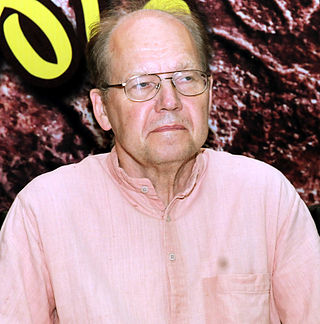
The Indo-European languages are a language family native to the overwhelming majority of Europe, the Iranian plateau, and the northern Indian subcontinent. Some European languages of this family—English, French, Portuguese, Russian, Dutch, and Spanish—have expanded through colonialism in the modern period and are now spoken across several continents. The Indo-European family is divided into several branches or sub-families, of which there are eight groups with languages still alive today: Albanian, Armenian, Balto-Slavic, Celtic, Germanic, Hellenic, Indo-Iranian, and Italic; another nine subdivisions are now extinct.
The Proto-Indo-Europeans are a hypothetical prehistoric ethnolinguistic group of Eurasia who spoke Proto-Indo-European (PIE), the reconstructed common ancestor of the Indo-European language family.
Slavic, Slav or Slavonic may refer to:
Indo-Iranian may refer to:
Pontic, from the Greek pontos, or "sea", may refer to:

The Indo-Iranian peoples, also known as Ā́rya or Aryans from their self-designation, were a group of Indo-European speaking peoples who brought the Indo-Iranian languages to major parts of Eurasia in waves from the first part of the 2nd millennium BC onwards. They eventually branched out into the Iranian peoples and Indo-Aryan peoples.
Graeco-Aryan, or Graeco-Armeno-Aryan, is a hypothetical clade within the Indo-European family that would be the ancestor of Hellenic, Armenian, and the Indo-Iranian languages, which spans Southern Europe, Armenian highlands and Southern Asian regions of Eurasia.

Asko Heikki Siegfried Parpola is a Finnish Indologist, current professor emeritus of Indology at the University of Helsinki. He specializes in the Indus Valley Civilization, specifically the study of the Indus script.

The Iranian languages, also called the Iranic languages, are a branch of the Indo-Iranian languages in the Indo-European language family that are spoken natively by the Iranian peoples, predominantly in the Iranian Plateau.
Proto-Euphratean is a hypothetical unclassified language or languages which was considered by some Assyriologists to be the substratum language of the people who introduced farming into Southern Iraq in the Early Ubaid period.
Proto-Indo-Iranian, also called Proto-Indo-Iranic or Proto-Aryan, is the reconstructed proto-language of the Indo-Iranian branch of Indo-European. Its speakers, the hypothetical Proto-Indo-Iranians, are assumed to have lived in the late 3rd millennium BC, and are often connected with the Sintashta culture of the Eurasian Steppe and the early Andronovo archaeological horizon.
Graeco-Armenian is the hypothetical common ancestor of Greek and Armenian branches that postdates Proto-Indo-European language. Its status is somewhat similar to that of the Italo-Celtic grouping: each is widely considered plausible without being generally accepted. The hypothetical Proto-Graeco-Armenian stage would need to date to the 3rd millennium BC and would be only barely different from either late Proto-Indo-European or Graeco-Armeno-Aryan.
Aryan was a self-designation by Indo-Iranian people.
Proto-Iranian or Proto-Iranic is the reconstructed proto-language of the Iranian languages branch of Indo-European language family and thus the ancestor of the Iranian languages such as Persian, Pashto, Sogdian, Zazaki, Ossetian, Mazandarani, Kurdish, Talysh and others. Its speakers, the hypothetical Proto-Iranians, are assumed to have lived in the 2nd millennium BC and are usually connected with the Andronovo archaeological horizon.
Pre-Indo-European means "preceding Indo-European languages".
Aryan, or Arya in Proto-Indo-Iranian, is a term originating from the ethno-cultural self-designation of the Indo-Iranians. It stood in contrast to nearby outsiders, whom they designated as non-Aryan. In ancient India, the term was used by the Indo-Aryan peoples of the Vedic period, both as an endonym and in reference to a region called "Aryavarta", where their culture emerged. Similarly, according to the Avesta, the Iranian peoples used the term to designate themselves as an ethnic group and to refer to a region called "Airyanem Vaejah", which was their mythical homeland. The word stem also forms the etymological source of place names like Alania and Iran.

The Armeno-Phrygians are a hypothetical people of West Asia during the Bronze Age, the Bronze Age collapse, and its aftermath. They would be the common ancestors of both Phrygians and Proto-Armenians. In turn, Armeno-Phrygians would be the descendants of the Graeco-Phrygians, common ancestors of Greeks, Phrygians, and also of Armenians.

The Indo-European migrations are hypothesized migrations of peoples who spoke Proto-Indo-European (PIE) and the derived Indo-European languages, which took place from around 4000 to 1000 BCE, potentially explaining how these related languages came to be spoken across a large area of Eurasia spanning from the Indian subcontinent and Iranian plateau to Atlantic Europe, in a process of cultural diffusion.
The farming/language dispersal hypothesis proposes that many of the largest language families in the world dispersed along with the expansion of agriculture. This hypothesis was proposed by archaeologists Peter Bellwood and Colin Renfrew. It has been widely debated and archaeologists, linguists, and geneticists often disagree with all or only parts of the hypothesis.





